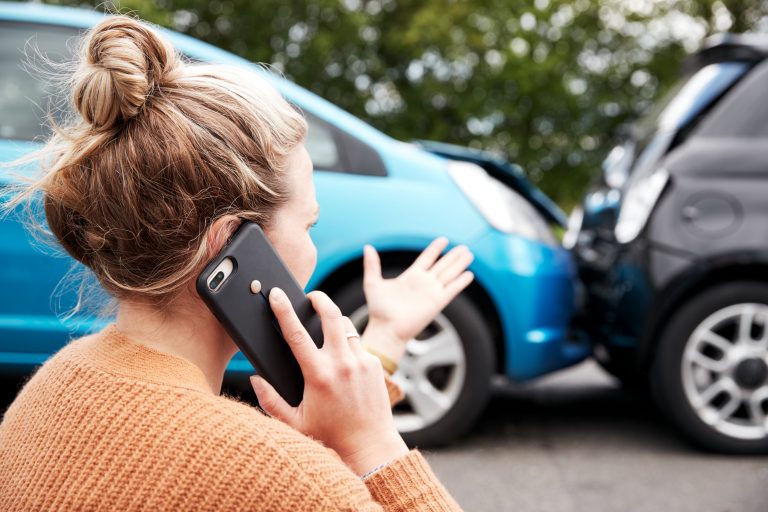Being involved in a car accident can be a stressful and daunting experience, and a time when you may not be thinking straight or in full control of your faculties. Being prepared beforehand with the proper items, as well as knowing what to do afterwards with some simple and easy-to-remember steps, can help you stay safe, and ensure you get the information you need from the scene, including information that may help to protect yourself from liability.
Before an Accident: Items to Have in Your Car
Consider printing out a copy of our accident report worksheet to keep in your car. This can be a helpful reminder of some important information to capture in case of an accident. Make sure you have a pen or pencil, and something to write on, in order to jot down information. If you don’t have paper and a pen, use your camera to photograph the information. Be sure to keep them handy in an easy to-reach spot like the glove compartment of your car. Having reflective triangles in your trunk can also help make your car more visible on the roadside following an accident. Other important items to have in your vehicle include a current insurance identification card, vehicle registration and a first aid kit.
After an Accident
- If you are involved in an accident, immediately take traffic safety measures and turn on your hazard lights. Remaining stopped on a roadway, for example to inspect the damage to your vehicle, can place yourself and others at risk of another accident. If safe to do so, move your vehicle off the roadway. Place reflective triangles on the edge of the roadway in the direction of oncoming vehicles to warn other motorists that there’s a stopped vehicle ahead. Be mindful of oncoming traffic when placing the reflective triangles.
- Check on all involved in the accident, if you are able. Call 911, or ask someone else to do so for you, if someone needs emergency medical attention.
- Call the police. Even if it is a minor accident, this can help you get a record of the details of the accident, even if no one appears injured or the damage appears to be minor. That may be helpful if you or others involved in the accident later develop injuries, discover damage and/or file a claim with their insurance company. Make sure to note the police department jurisdiction (state versus a town, for example) and the officer’s name to help obtain a police report later, if necessary.
- Exchange information with the other driver or drivers. Write down the contact information (phone and email), license plate numbers, make, model and insurance information of all involved vehicles. Record the names, contact information and addresses of any witnesses.
- Take pictures of the accident scene and the involved vehicles, if it’s safe to do so. You may also want to take panoramic video footage to capture the accident scene. It can be helpful to capture road conditions, weather and traffic control devices, such as stop signs or lights.
- Create a detailed description of the accident. Include the date, time, location, weather and road conditions. Note the behavior of other drivers and the condition of the other vehicles. Before leaving the accident scene, write down as much detail as you can. For example, it can be helpful to note details such as whether the other vehicle’s headlights, tail lights and/or brake lights were on, whether the other vehicle appeared to have pre-existing damage, or whether the other driver appeared to be distracted or using a cell phone at the time of the accident. A diagram of the accident scene can also be helpful.
- Report your claim to your insurance company. Call the number on the front of your automobile identification card or call Focus Insurance to report your claim. You can call from the scene of the accident if it is safe to do so. Make sure you share the information that you have captured, as it can help limit your liability and help you get a fair resolution to your case. If you receive any communications about the accident, promptly forward it to your insurance company claim representative.


Recent Comments